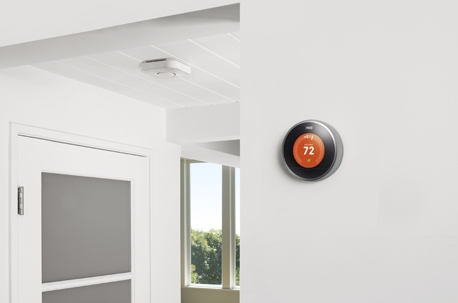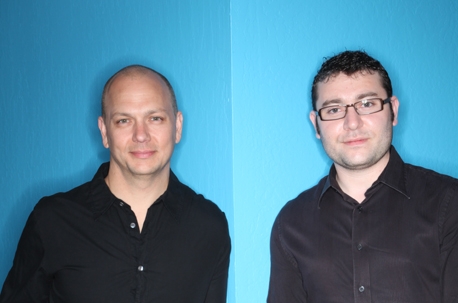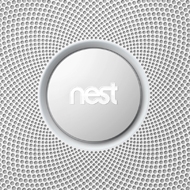FEATURE15 January 2014
All MRS websites use cookies to help us improve our services. Any data collected is anonymised. If you continue using this site without accepting cookies you may experience some performance issues. Read about our cookies here.
FEATURE15 January 2014
Google’s $3.2bn acquisition of smart device maker Nest opens up a whole new world of behavioural data to the internet giant. Brian Tarran reports.

Has Google’s acquisition of Nest, the smart thermostat maker, turned up the heat on the internet of things? Large swathes of the technology press seem to think so.
Buying into smart meters is a smart move, reckons Wired’s Marcus Wohlsen. “Google knows what we search for, so it can sell advertisers the eyeballs of someone who has already stated some interest in what they sell… [But] one area of human behaviour Google has yet to colonise as successfully is what we do when we’re not directly interacting with a screen, whether on a PC or mobile device. That in theory changes with Nest.”
Nest currently has two devices: the aforementioned thermostat, and a smoke and carbon monoxide alarm. Unlike the run-of-the-mill versions of these devices, Nest Thermostat and Nest Protect are connected to the web, allowing owners to monitor and manage both bits of kit remotely. Smarter still, Nest’s thermostat is designed to ‘learn’ about its owners’ behaviours: it records manual temperature adjustments over time, analyses the data and creates its own schedule for cooling and heating the home, based on outside temperatures and whether or not anyone is in.
But this is just the start, says Tony Fadell, CEO of Nest. “With [Google’s] support, Nest will be even better placed to build simple, thoughtful devices that make life easier at home, and that have a positive impact on the world.”

Nest founders Tony Fadell and Matt Rogers
The purchase of Nest is clearly a fillip for Google, says the Financial Times. It hands the internet giant an “edge in the ‘smart home’ market”, which is a booming area of innovation if the recent Consumer Electronics Show is anything to go by. A whole host of new, connected household devices were on show at the Las Vegas event; from smart baby monitors that synch with sensor-laden babygrows, to Sony’s lifelogging SmartBand device.
The paramount value of these sorts of devices, says Wired’s Wohlsen, “lies not in the hardware itself but the interconnectedness of that hardware. As the devices talk to each other, by building an aggregate picture of human behaviour, they anticipate what we want before even we know”.
This gets to the heart of what the internet of things is all about: “Easing processes and generating efficiencies,” says IDC research director Denise Lund, speaking in the latest issue of Impact Magazine. The tech market analyst defines IoT as “a network connecting either wired or wireless devices or things”. Unlike the regular internet, people aren’t directly involved. “We don’t include in our concept and definition devices that require human interaction,” says Lund. “The internet of things is characterised by autonomous provisioning, management and monitoring, and it is innately analytical and integrated.”
“There were some 19bn connected devices in 2012. This is expected to increase to 30bn by 2020, with technology and services revenue related to the internet of things set to almost double to $8.9trn by the end of the decade”

Indeed, in Wired Wohlsen draws a clear distinction between the “web” and the “internet”. “Google has built nearly its entire business on its unmatched ability to wring value out of the web,” he says. “But it’s easy to forget that the web and the internet are not synonymous. The web is one medium made up mostly of human-crafted content. Google knows how to find that content and connect us to the pieces most relevant to what we want to know. The value that Nest is creating, by contrast, stems from the connections it is forging among its devices themselves.”
By IDC’s reckoning, there were some 19bn connected devices in 2012. This is expected to increase to 30bn by 2020, with technology and services revenue related to the internet of things set to almost double to $8.9trn by the end of the decade.
Google is no doubt eyeing those revenue predictions hungrily, but it does have hurdles to overcome. Although the acquisition of Nest is a first, limited step into the ‘smart’ home market, privacy advocates already have their hackles on standby, ready to be raised at a moment’s notice.
In a blog post that followed news of the acquisition, Nest co-founder and vice-president of engineering, Matt Rogers sought to tackle this very subject. In an FAQ, he posed the question, ‘Will Nest customer data be shared with Google?’, to which he answered: “Our privacy policy clearly limits the use of customer information to providing and improving Nest’s products and services. We’ve always taken privacy seriously and this will not change.”
But this wasn’t quite the definitive statement of ‘no sharing’ that some would have hoped for. After all, as devices become more interconnected, data sharing might easily be justified on the grounds that improvements to one product in the Google family would have benefits for another.
The Washington Post’s Brian Fung wrote: “The concern is more than simply academic. By monitoring customers’ thermostat use, Google would be able to determine when a user is at home and when they’re out. It would know the limits of your comfort zone, and perhaps even combine it with information gathered from your cell phone to make even deeper determinations.”
While that might sound scary to some, the possibilities for researchers and others looking to gain a more detailed understanding of human behaviour is surely tantalising – though it’s likely to be a while yet before Google is able to realise the full value from its $3.2bn investment.
“This is a classic example of a crazy valuation being justified by long-term strategic value,” said Richard Windsor, an ex-Nomura analyst who now runs the RadioFreeMobile consultancy, in an interview with The Guardian.
The internet of things might not have reached boiling point just yet, then – but Google has certainly turned up the thermostat a couple of degrees.
The following tweet, from Amie Stepanovich, an attorney and advocate with the Electronic Privacy Information Center, cuts to the heart of most people’s concerns about the Google–Nest deal, and its implications for personal data:
Think current NEST users will get to decide if they want to send their info to Google? Or will only option be to opt-out by uninstalling?
— Amie Stepanovich (@astepanovich) January 13, 2014
Consumers want control over their data, says Forrester analyst Fatemeh Khatibloo, in a December blog post. Several studies – including one, most recently, by IBM – support Khatibloo’s conclusion that: “Consumers are willing to share data when it provides them with real value and when they have a choice about its collection and use.
“In other words,” she writes, “the ‘new privacy’ is all about context, and we define ‘contextual privacy’ as a business practice in which the collection and use of personal data is consensual, within a mutually agreed upon context, for a mutually agreed upon purpose.”
Google and Nest, and other business looking to capitalise on the internet of things, will need to be prepared to have these sorts of conversations with consumers. It requires companies to accept that the data they collect about people ultimately belongs to those individuals.
But even in Nest’s own dealings with customers, it appears to have some way to go before it fully grasps this concept. Writing on the blog site Medium, Danny Howard recounts his failed attempt to get Nest to share his data with him, so he can conduct his own analysis. “The advantages of a Nest thermostat are limited by the limited philosophy of what customers want,” he concludes.
0 Comments